Chris Parkin loves a straight pull, and is impressed when he tests out the new Haenel Jaeger NXT Straight Pull Rifle in .30-06 in this review!
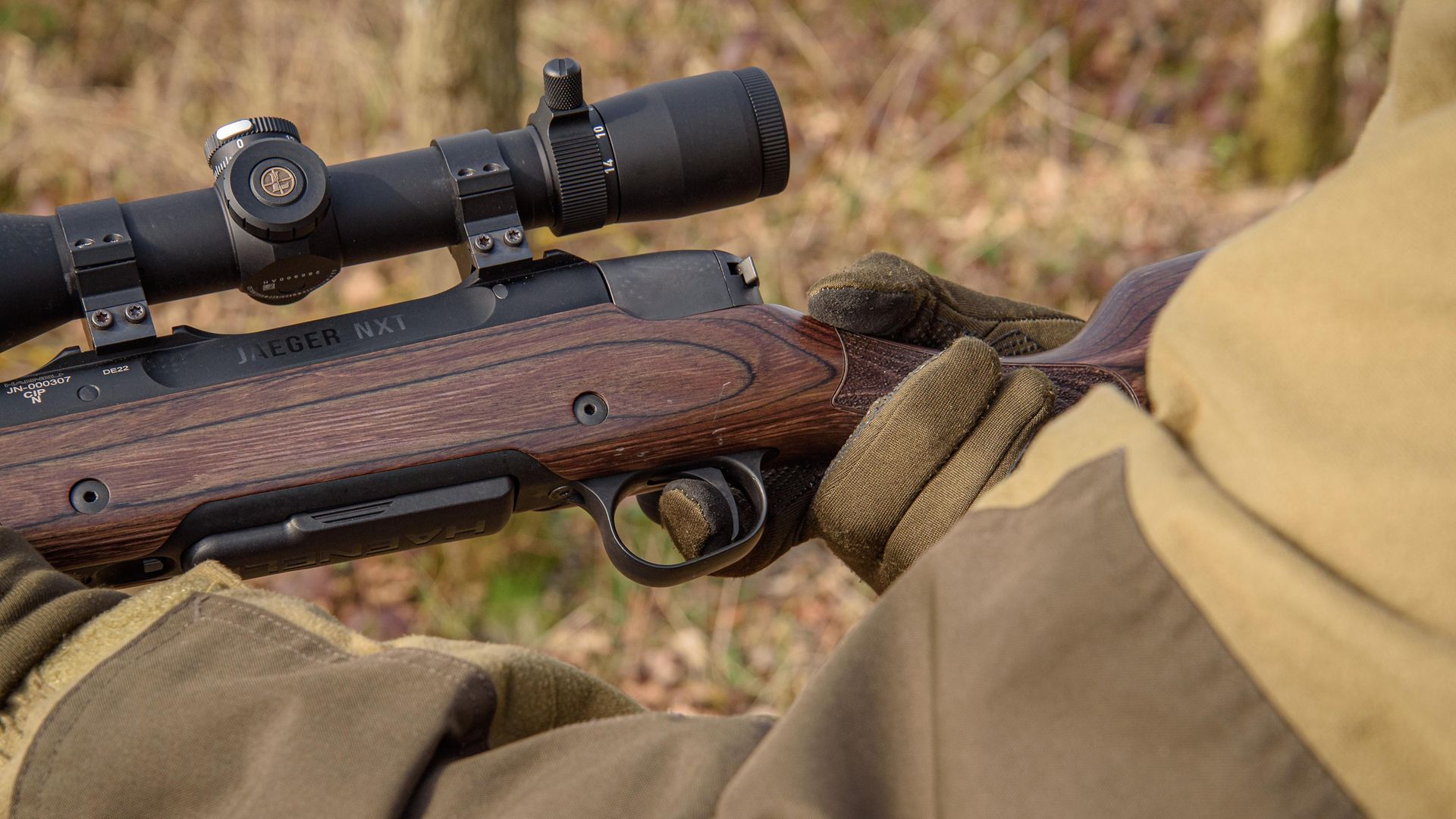 credit: David Land 2022
credit: David Land 2022
Whether or not you want or need the supposed speed, it’s fair to say that the straight pull ethos is one of few areas of innovation in modern rifle design. The turnbolt principle – whether one, two, three or even four lugs – is timeless, but the ability to ‘grip it and rip it’ is intoxicating and, frankly, just shows how creative the designers and engineers are.
My mind leads me to the Savage Impulse we saw a few months ago, a great rifle that brought new life to a brand often considered secondary in the UK. Yet sadly, since then the brand has ceased to be distributed in the UK due to poor sales, before the new rifle had an opportunity to stake its claim.
Similarly, Haenel, although seen here for several years, always seemed the slightly dull sibling in the shadow of sister company Merkel, whose Helix was one of the go-to choices for a straight-pull, fast-fire rifle.
This rifle’s 510mm/20" barrel shows an 18mm muzzle diameter with invisibly capped 15x1 thread for moderator or brake. The crown is perfect, with no worrisome chatter and the barrel is deep black matt throughout with no specific coatings named, but with all the looks and reassurance of a quality brand.
The front sight is removable to offer full thread access, and with its single red dot offers a simple pure light point and aiming solution within the notch created by three green fluorescent dots in the rear sight ahead of the action, just above where your front hand meets the stock.
This stock is a birch laminate, not particularly unusual, although Haenel advertises it is a fast-growing timber. They have used modern, environmentally friendly, non-aggressive chemicals for both lamination adhesives and external finishes and coatings to offer a great matt look and long-term stability. The barrel is truly fully floated,. There is no underside stud fitted for a bipod but it would not be difficult to add and I have no doubt it would shoot superbly from one. A sling loop is supplied at the schnabel tip and similarly under the butt stock for carriage.
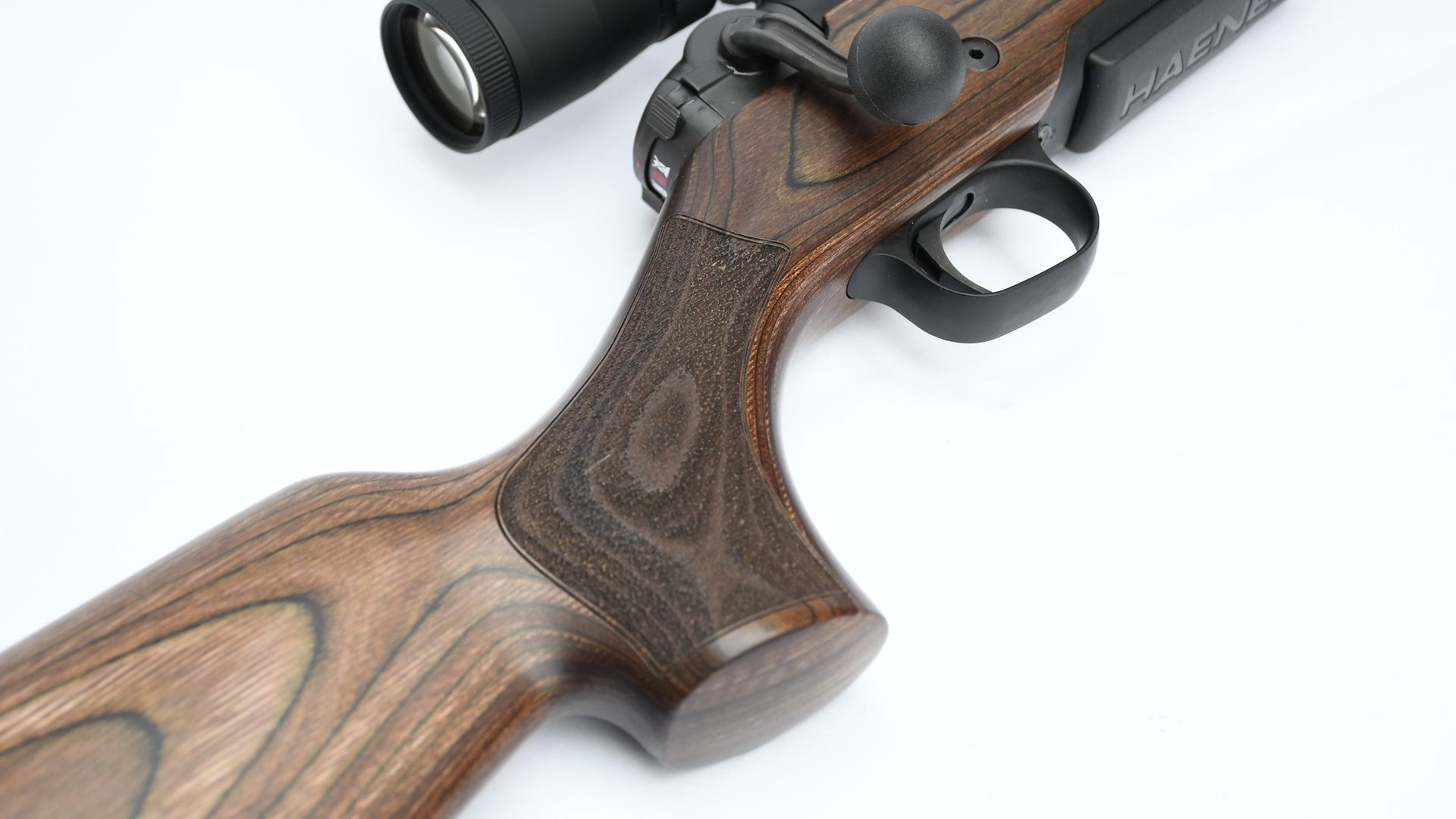 credit: Chris Parkin
credit: Chris Parkin
Look and feel
The rifle has a real organic look courtesy of the timber in a deep brown hue. It’s not dissimilar to stained walnut and also has the appeal of the birch grain. Stippling is applied to the forend and pistol grip, offering a fantastic tactile feel as well as additional grip. The matt finish offers little reflection and feels tough. It’s a true hunting rifle, ideally specified to balance mechanics and looks with naturally camouflaged tones. Further rearward, the comb is reasonably tall, as high as bolt transit will allow, with a straight top from recoil pad to bore line making it ideal for the iron sights, but perhaps a little low for a scope – a trend that few rifles divert from.
The recoil pad is 12mm thick, non-ventilated and has a stippled texture for grip. Interestingly, and without trekking back through every article I have ever written, I think this may have the longest length of pull on a sporting rifle I have yet encountered. It’s 14.75"/375mm from trigger blade to pad surface! US guns at sub-14" nearly always fall short and I’m 5' 11", so taller shooters will find this rifle especially appealing.
Where the Haenel really stands out is the bolt design. With a 45mm steel handle and 25mm diameter black polymer ball, from afar you see nothing special. But close inspection reveals that it pivots rearward rather than upward to give the straight pull.
Initially the mechanics not immediately obvious and it takes a few seconds to work out the bolt operation sequence. In a fired state, the bolt handle pulls straight back, hits its bolt stop after 110mm and then pushes back forward, clicking to what you may think is into battery, but it’s not quite. The round is chambered and the bolt locked shut, but the firing mechanism is totally inoperable and de-cocked.
Now, push that bolt handle 15-20mm further forwards and it goes live with a cocked firing pin spring! If you do fire, you are back where you started; simply grip it and rip it again for more fun – just make sure you push the bolt home fully. A Blaser has a similar arrangement. You need to push the bolt handle its final few millimetres but the de-cocker is separate, on top of the shroud. On the Haenel it is the bolt handle itself.
Further controls on the shroud are within the crescent shaped rocker showing two wings either side. With the rifle closed and de-cocked, push the left wing with your thumb as you pull back the bolt handle for safe opening. This is both smooth and intuitive. Less obvious is that with the bolt closed and un-cocked (for when you may fear bumping and accidentally cocking the handle), just push the right wing forward and as well as the gun being un-cocked, the bolt handle and shaft is locked and totally inoperable. This sounds far more complicated than it is in reality and is one of the most functionally safe yet still fast systems I have encountered.
Another big issue is whether the bolt will hit your nose if you keep your head on the stock and aligned with the sight through the reload? Again, some makers have ignored this, making shooters nod their heads faster than a Texas oil well on a short-action .308. Rest assured that this long-action 30-06 Haenel’s bolt does not hit your nose or face.
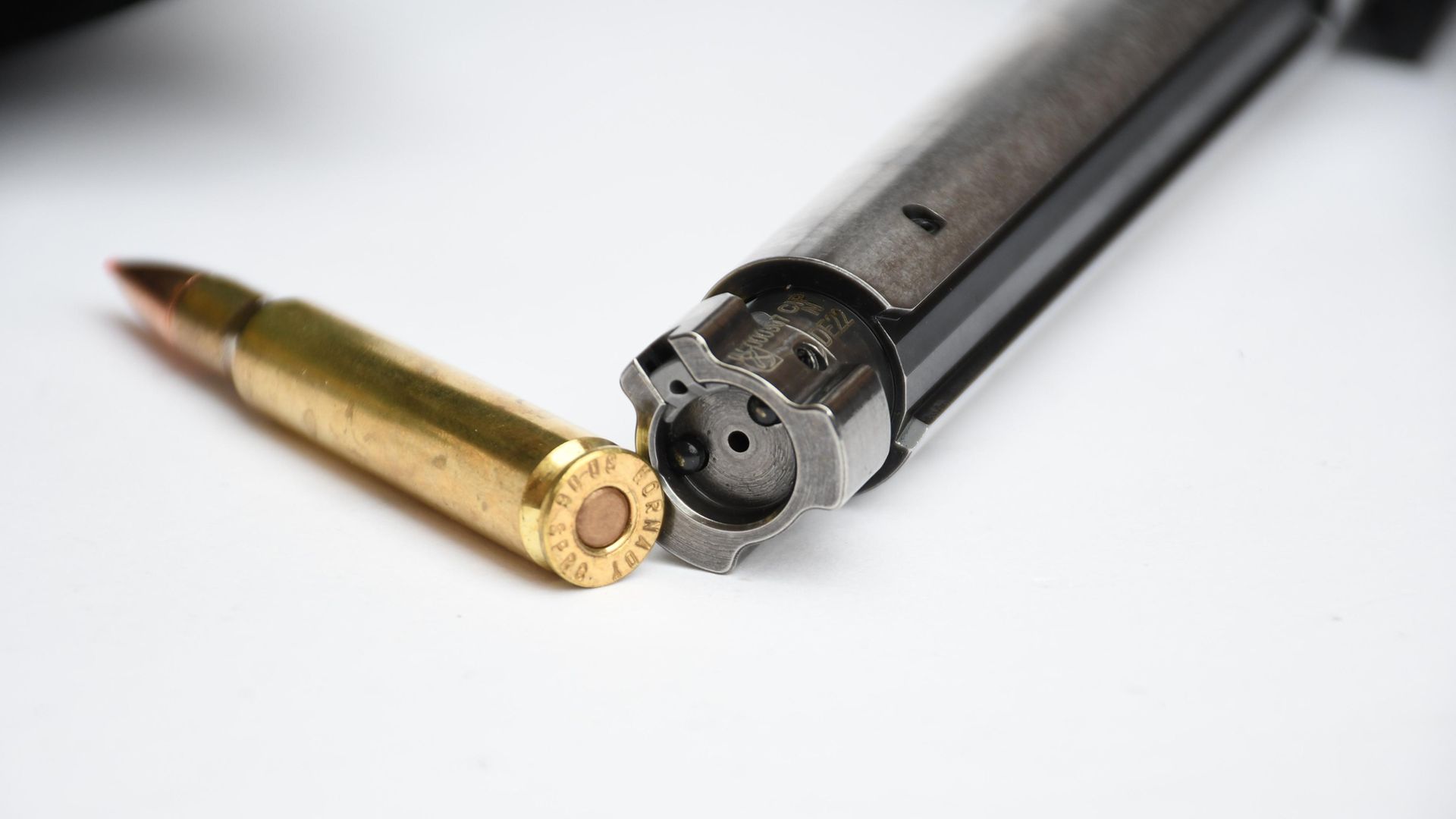 credit: Chris Parkin
credit: Chris Parkin
The action up close
Finally, how strong is the action when removing swollen fireformed brass from the chamber? Haenel have thankfully addressed this issue. The bolt release catch is normal – a push button to the left side of the bolt raceways above the tang – revealed as the bolt is slid backwards. Press the button and rotate the bolt anti-clockwise to withdraw it completely.
Up front we see a conventional-looking three-lug head with push-feed face and twin ejector plungers to expel the brass. Now turn the bolt over, look under the shroud and you see two small bevel gears that power rotation of the bolt shaft ahead of the shroud within the receiver. The bolt’s full length turns while the shroud remains stationary.
This is a superb solution because unlike an AR-15 derived system, whereby the bolt head is rotated by helical groves in a carrier, requiring carrier movement to unlock the bolt and consequently increased stroke length, this prioritises conventional 60° bolt shaft rotation before any kind of carrier ever moves. Primary extraction is also aided by a plunger between receiver and shroud that forces the bolt rearward to withdraw that tight brass attached up front.
Another factor to consider is the trigger. It’s a single-stage unit that doesn’t advertise adjustability, but a strip down of the action from the stock shows grub screws without globs of threadlock smeared over them. I measured the weight of this one at 600g and it’s crisp and light enough for most shooters in the summer and heavy enough for the cold winter days in gloves, which fit happily within the trigger guard.
The magazine is a twin-column unit that hold five rounds that are simply pressed in from the top. Being polymer the magazines aren’t onerously expensive, operate quietly, don’t freeze to your fingers and won’t noisily scrape or damage your brass. You can add another round in the chamber if necessary.
Should you need to, you can pop rounds into the ejection port and press them down into the mag without excessive time wasted during fast fire situations. Ammo feeds smoothly and extracts/exits similarly, without requiring bolt force or excess speed in either direction. The rifle is quiet, so perfectly at home in calm stalked or sedentary high-seat scenarios with deer so close you feel they can hear your eyes blinking.
You push a button in front of the magazine well to have it slide out gently into your palm. The tolerances and overall profile are ideal for hassle-free operation and it never jammed during insertion. Finally, if you don’t want to extract (or risk losing) the mag, the underside button will click sideways to lock the catch.
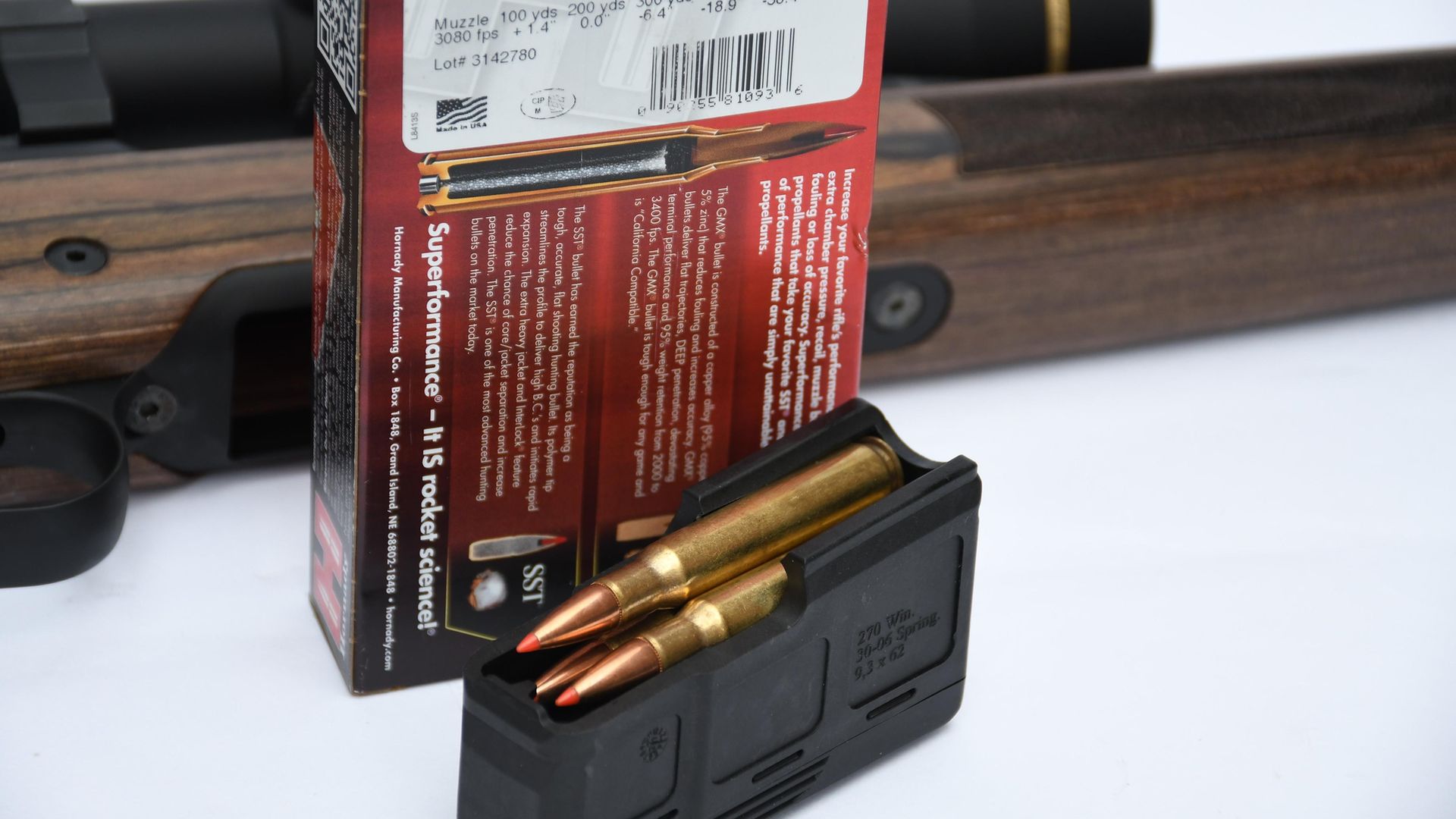 credit: Chris Parkin
credit: Chris Parkin
Home on the range
Was it all about to go wrong at the range? It didn’t. The rifle performed exactly as I expected. Not using a bipod meant I shot off the bench with a heavy bag up front and rear bag for stability.
I had 150gr soft-point lead ammunition from Hornady with some 165gr Superformance GMX non-toxic to assure functionality into the future. Taking six shots to zero the rifle highlighted a crisp, predictable trigger, the butter smooth, quiet and effortless action, and no bullet meplat damage from the magazine or feed ramp. This is not to be taken lightly. Some guns need a particular speed and fluidity to chamber a round, but here I was unable to jam a live round, fail to eject or even get the bolt to stutter from deliberately clumsy operation at any phase of its cycle.
Twin Weaver scope bases are machined into the action’s steel architecture, so scope mounting was secure and straightforward. I felt the scope was a little high relative to the cheekpiece, but in fairness my chin hovers over the stock of most sporters. Firing the rifle gave a fair, but not unexpected, .30-06 recoil. Laminated stocks are hard and durable, quite dense compared with walnut and with less intrinsic damping, but they don’t resonate with a hollow echo like some synthetics.
It had been a while since I had spent a day shooting a relatively light .30-06 without even a moderator, and poor design would have translated into pain fairly quickly, but it didn’t. The recoil pad does a good job and not having a hard cheek weld does remove some of the natural transit of noise into your skull. I had given the barrel a good clean and that showed no problems. Zeroing and a bit of feel assessment were followed with an initial 2+1 group of exactly 25mm at 100m, which is superior to the common three-round MOA assurance from most manufacturers.
A 2+1 group means two bullets going through one hole with the third significantly opening the group up. Depending on the order it may signify shooter error, but at the end of the day reliable MOA is just that, and the phrase can apply to 4+1 just as easily.
The 150gr Hornady’s continued to hold this standard within 1mm, so I moved to the copper. I didn’t have the opportunity for another clean and carried on shooting into the 100m target. The first three shots were terrible, landing high, low and middle to form an 80mm group, which was quite alarming. But I persevered, knowing that the barrel was no different but may well need to acclimatise.
The next group achieved the magic 25mm and further groups ebbed and flowed a little, creating an aggregate of 28mm centre to centre with no significant flyers, returning to the same point of aim/impact as the previous 150gr lead zero. Speeds were about 100fps below the advertised values but I was very pleased with a lovely 11mm group to finish up and there seemed no further need to punch paper. I would also say this was from a portable bench, not my usual fixed bench at the range.
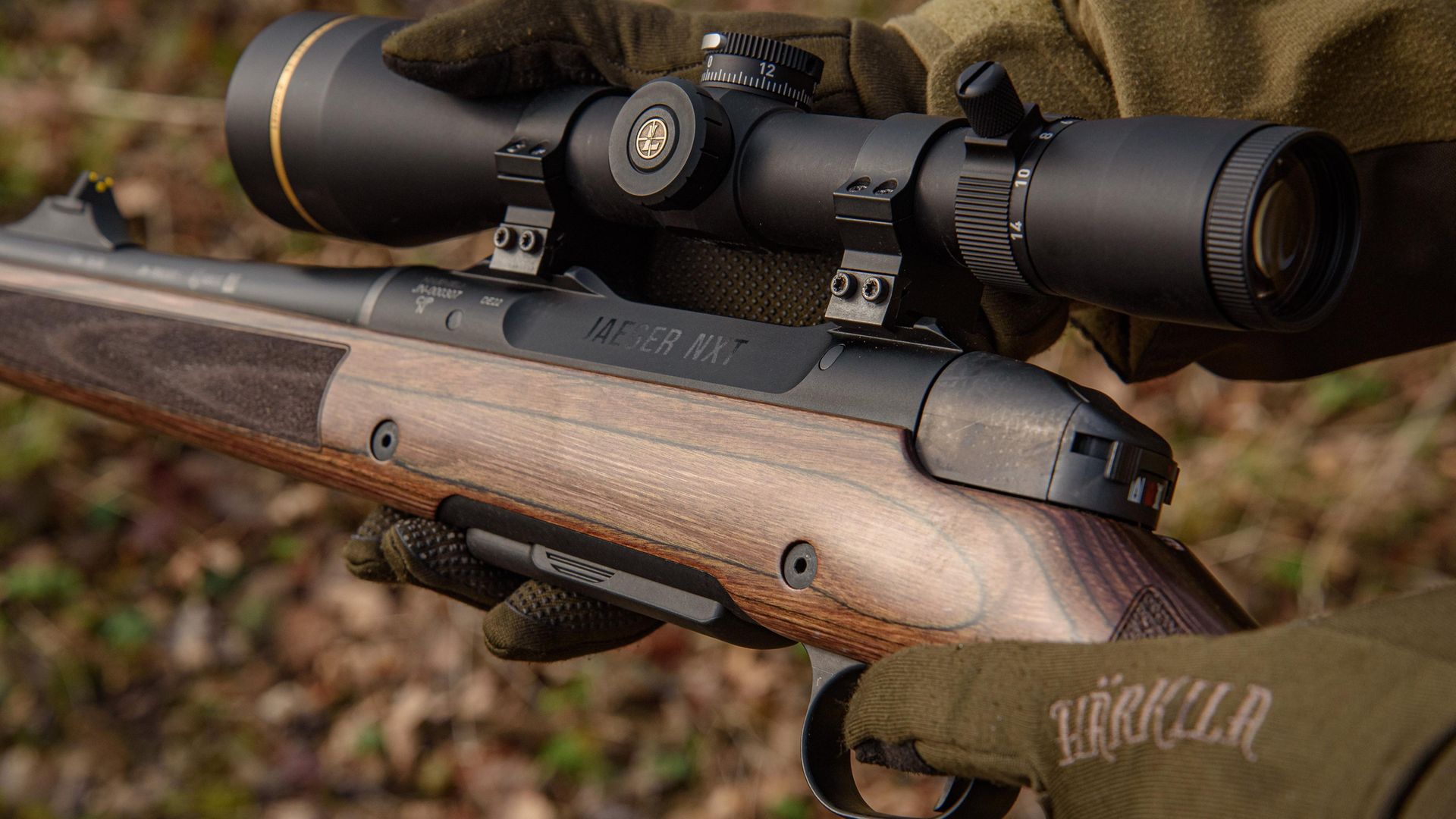 credit: David Land 2022
credit: David Land 2022
Off the sticks
I also shot from quad sticks onto steel gongs. The forend’s rounded underside isn’t quite as stable as a flat one, but handling was stable and intuitive with the short, stout barrel inducing a slight nose-heavy balance. I took some fast freehand shots, point-and-shoot with a single fast reload, to get a feel for bolt operation in the shoulder.
The length of pull is about 20mm longer than my preference, but I had no problem reaching the bolt to close it at speed, and as with any gun with truly capable functionality I was attuned to its operation after just a few shots. Functionality without hassle is what I like. I’m a fairly experienced shooter in many formats but the fact that I often shoot three or four guns a day perhaps helps me feel less geared to any specific action style, somewhat like a newer shooter, whose needs I can therefore more easily appreciate.
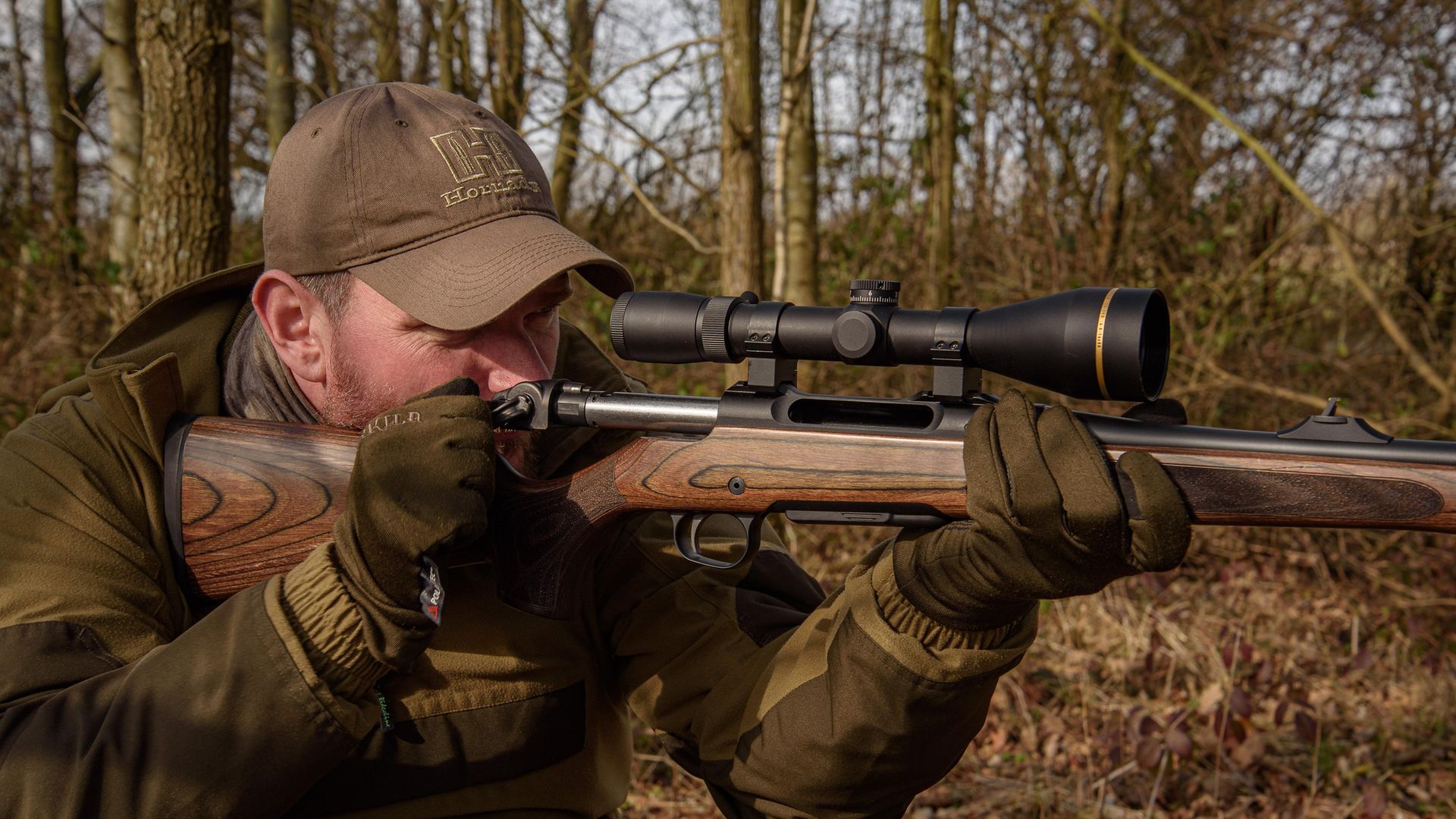 credit: David Land 2022
credit: David Land 2022
Conclusion
This rifle appears to have been designed by someone who has read every complaint I have ever written in reviews and ticked them off one by one. It has an utterly streamlined design, with great handling and accuracy, all wrapped up in a sporter I would happily carry to hunt fast-driven or silent stationary quarry. Other than currently limited calibre and barrel selection, I think it’s inventive and embodies evolution, and not just trying to be different or playing catch-up. It’s only March, but it’s going to take a gun with some serious talent to impress me more this year. It’s also considerably cheaper than I would have thought. A fine rifle!
Specifications
Calibre: 30-06, .308 also available
Overall length: 1040mm/41”
Weight: 3.15kg/6.94lbs
Length of Pull: 375/14.75”
Magazine capacity: 5 round detachable (+1 in the chamber)
Trigger: single stage, 600gr/21oz.
Barrel length: 510mm/20” 18mm diameter hammer forged, 15x1 thread
Twist Rate: 1 in 11” twist
Stock: Ecologically sourced and manufactured birch laminate
Scope mounting: Twin Weaver Bases machined atop action
Suggested retail price: £2200
Contact Viking Arms
Tel: 01423 780810
Also used
Hornady Ammunition
Contact Edgar Brothers
Tel: 01625 6123177